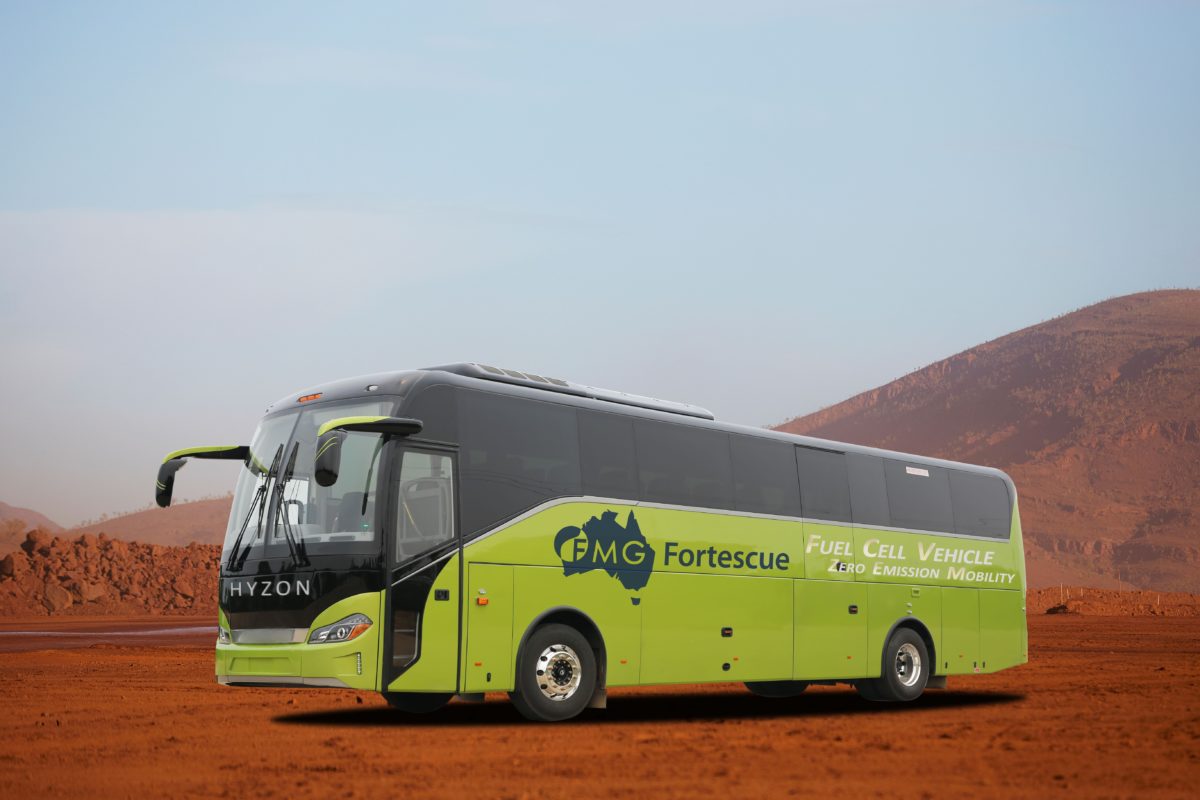Renewables continue to reap benefits from Western Australia’s Recovery Plan; now the Sandgroper State Government has announced $22 million in funding for nine renewable hydrogen industry initiatives. Most significantly however, is the ambitious resetting of WA’s renewable hydrogen targets from 2040 to 2030.
WA’s Renewable Hydrogen Strategy was born in July 2019 with the creation of a $10 million green hydrogen fund. The Recovery Plan’s first move was to top up the green hydrogen fund with a further $5 million. The Strategy seeks to position WA as a major producer, user, and exporter of green hydrogen.
WA Premier Mark McGowan said the “Major export markets are seeking hydrogen much sooner than expected…” and so the “WA Recovery Plan is focused on creating a pipeline of local jobs to support WA’s economic recovery, while investing in growing green industries.”
$5.7 million of this stimulus funding is committed to an Australian-first solar electrolysis microgrid in the Gascoyne town of Denham. The microgrid will act as a test for whether solar-to-hydrogen microgrids are feasible for regional areas throughout the state. Denham already gets 60% of its energy from wind turbines, but WA regional utility Horizon Power, proposer of the solar hydrogen project, believes renewable hydrogen can take the town to 100% renewables.
“The demonstration project in Denham is industry-leading,” said WA Regional Development Minister Alannah MacTiernan, “and has the potential to be rolled out across the State to benefit a wide range of small towns and communities.”
A further $2 million is committed to Fortescue Metal Group’s (FMG) $32 million H2’s renewable hydrogen mobility project in the Pilbara. The project will produce solar hydrogen for transport at Fortescue’s Christmas Creek iron ore mine. Transport is one of the more difficult aspects of the mining industry to decarbonise, so this project could prove significant, specifically for Fortescue, which plans to purchase ten hydrogen fuel cell electric buses to replace its diesel fleet.
FMG believes the transition of its coach fleet to hydrogen-power is a demonstration of the miner’s drive towards zero-emissions mobility. The hydrogen coaches, custom build by Hyzon Motors, will replace existing diesel buses from mid-2021 with the installation of a refuelling station powered by the Chichester Solar Gas Hybrid Project on-site.
“This project represents a first step towards decarbonising our mobile fleet,” said Fortescue Deputy Chief Executive Officer Julie Shuttleworth, “which is an important part of our goal to achieve net-zero operational emissions by 2040.”
A cool $1 million has been allocated to ATCO’s hydrogen refueller project in Jandakot, to serve as part of ATCO’s existing Clean Energy Innovation Hub, a testbed for energy solutions, where it will fuel a fleet of electric vehicles (EVs). The Canadian gas giant started blending renewable hydrogen into its on-site natural gas network in December 2019. It is thought that the hydrogen refueller project could eventually charge over 1,000 EVs in the Perth metro area.
But that isn’t all, the Recovery Plan will also fund regulatory reform packages, the expansion of the Renewable Hydrogen Unit in the Department of Jobs, Tourism, Science and Innovation, hydrogen storage location scouting, supply chain model development, and another study into blending hydrogen in the WA gas network.
The Green Recovery is a Regional Renaissance
According to new economic modelling published by Accenture’s AlphaBeta and commissioned by the Climate Council, 76,000 clean jobs could be created nationwide over the next three years in a green economic recovery to the impacts of Covid-19.
AlphaBeta’s “The Clean Jobs Plan” (Plan) sets out a dozen policy options which would accelerate sustainable job creation for, in the words of AlphaBeta Director, Andrew Charlton, “the people who need them most.”
The Plan has been released on the back of a personal plea from Clean Energy Council (CEC) Chief Executive Kane Thornton to Canberra to allow the renewable energy industry to lead the Covid-19 economic recovery, and think-tank Beyond Zero Emissions’ (BZE) publication of its Million Jobs Report, in which a green scaffolded economic recovery which posits 1.8 million new jobs can be created through renewables and low emissions projects over the next five years, many of which would be created in rural and regional Australia. This latter Report already has strong support, including Mike Cannon-Brookes, Ross Garnaut, Malcolm Turnbull, Kevin McCann, and Christiana Figueres.
Many of the young in remote parts of Western Australia, like the Kimberley, find themselves heading to the South-West in search of more opportunities in the Big Smoke. But the flip side of crisis is opportunity, and the transition to a green economy, perhaps boosted by the necessity of economic stimulus brought on by Covid-19, not only promises to create new jobs in regional Australia, it promises to create more jobs in regional Australia than ever before.
This content is protected by copyright and may not be reused. If you want to cooperate with us and would like to reuse some of our content, please contact: editors@pv-magazine.com.









8 comments
By submitting this form you agree to pv magazine using your data for the purposes of publishing your comment.
Your personal data will only be disclosed or otherwise transmitted to third parties for the purposes of spam filtering or if this is necessary for technical maintenance of the website. Any other transfer to third parties will not take place unless this is justified on the basis of applicable data protection regulations or if pv magazine is legally obliged to do so.
You may revoke this consent at any time with effect for the future, in which case your personal data will be deleted immediately. Otherwise, your data will be deleted if pv magazine has processed your request or the purpose of data storage is fulfilled.
Further information on data privacy can be found in our Data Protection Policy.